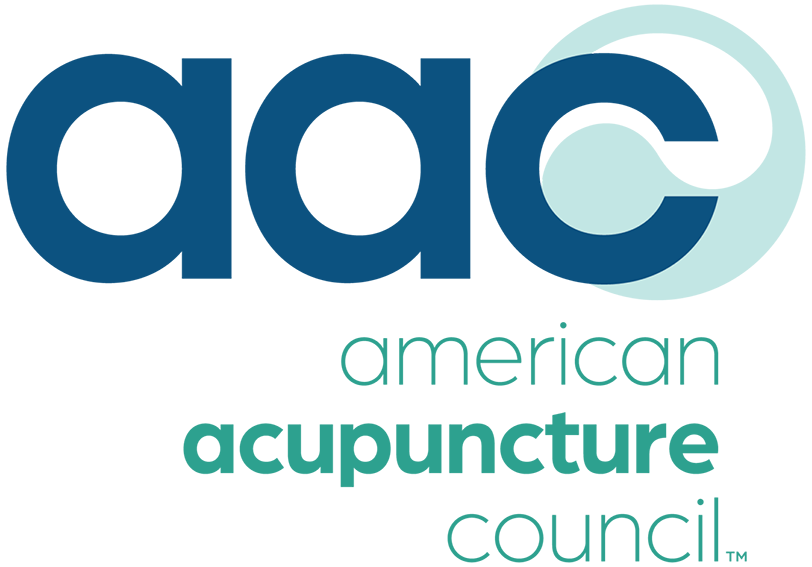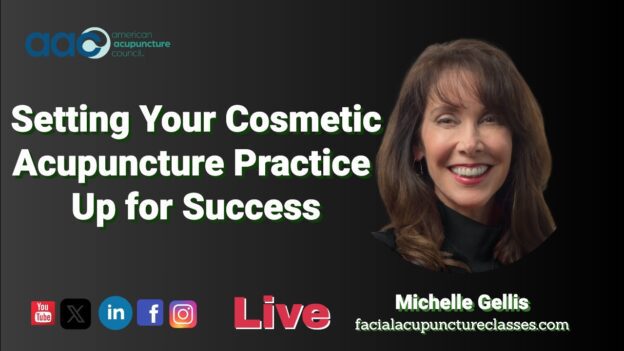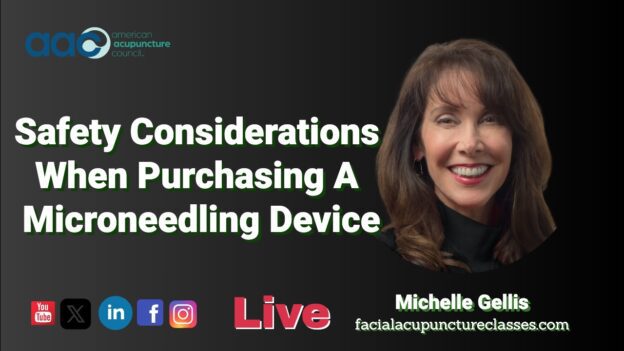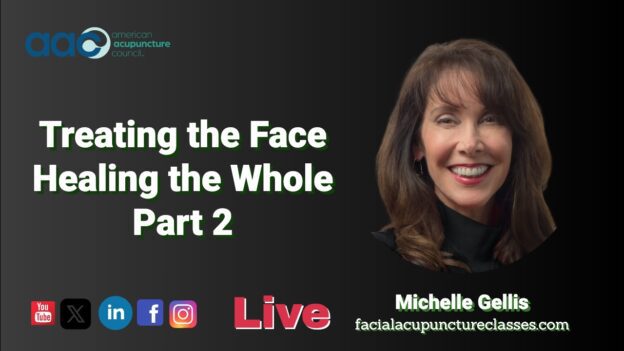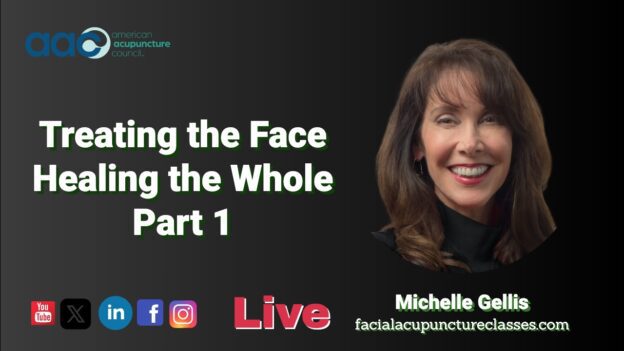Click here to download the transcript.
Disclaimer: The following is an actual transcript. We do our best to make sure the transcript is as accurate as possible, however, it may contain spelling or grammatical errors. Due to the unique language of acupuncture, there will be errors, so we suggest you watch the video while reading the transcript.
Hi, my name’s Michelle Gellis, and I would like to thank the American Acupuncture Council for giving me this opportunity to speak to you today about microneedling for hair loss. Go to the first slide.
Click here for the best Acupuncture Malpractice Insurance
A little bit about me. I am an acupuncture physician. I am the author of this book called Treating the Face. It is a comprehensive guide. Wait this way and back a little bit. Okay. It is a hardcover 500 page full color book with over 350 images in it, on treating the face and. There’s an entire chapter in this book on micro needling, so you might wanna check that out.
Get a Quick Quote and See What You Can Save
And I teach cosmetic and facial acupuncture classes internationally, and I am currently on faculty at Yoan University in Los Angeles, California. So what is microneedling? Microneedling creates micro channels in the skin, and these micro channels will trigger cellular repair and regeneration. It helps to stimulate collagen and elastin and growth factors in the skin, improves the blood flow to the skin, and therefore nutrient delivery.
It enhances the absorption of any topical products that are put on the skin. And. Therefore it is used for skin rejuvenation, for things like wrinkles, scars, pigmentation issues, and what we’re gonna talk about today, hair growth. This is what a micro natal pen looks like. This particular one is made by AccuLift and you can see the website on the slide there, acif skincare.com.
And these have a dial here, and this determines. How deep the little needles on this cartridge will go into the skin. And this little window here it determines the speed, how fast those needles are going in and out of the skin. And this is what the needle cartridges look like. These are the 16 pin or 16 needle cartridges that would be used for microneedling the scalp.
And I did wanna talk to you a little bit today about hair loss, different types of hair loss. There are a lot of different reasons why we lose our hair. And this quick 10 minute lecture I’m giving you today is part a much longer one hour CEU lecture that I give. Which goes into all of this in much more depth.
So this is an overview, but some of the more common types of hair loss are androgenetic. Alopecia, which is commonly referred to as male pattern or female pattern baldness or hair loss. Intelligent effluvium, which is typically from stress or illness if your hair falls out. Alopecia areata, which is an autoimmune disease, scarring up.
Alopecia, which is an irrevocable follicle loss. There are other hair shaft abnormalities. Enogen Effluvium, which is a rapid hair loss resulting from some sort of a medical treatment like radiation or chemo. Tinia capita, which is ringworm in the scalp. And hypo psychosis, which is just naturally sparse hair or reduced hair growth.
Now micro noodling is good for some of these and not for others, but I just wanted for to purposes of today. I just wanted to give you an overview on some of the different types of hair loss within the TCM framework, hair loss. Can mean reduced follicles, whereas hair thinning is the reduced shaft, the caliber of the hair shaft, and we have several patterns that we look for.
So chi and blood deficiency, damp heat, liver, kidney deficiency. These are all different patterns that can show up with hair loss, just microneedling. I’m sorry for hair loss that microneedling can be effective for. So you want to address the root with body points and then do some local scalp therapy with the microneedling.
So you do your acupuncture body points, and then you would do the microneedling locally and. Blood heat generating wind pattern might show up as itching, headache, red tongue, and the treatment. Would be to clear the heat, extinguish the wind chi and blood deficiency frequently, or post illness or postpartum.
And your patient may have fatigue, palor, weak pulse, thin hair. And the treatment would be to tonify the cheek, nourish the blood for damp heat. This is often diet related. They might have a greasy scalp, loose roots, itching, red tongue, so you wanna clear the heat, resolve the dampness. And for a liver and kidney deficiency, this can happen in middle aged individuals.
They might have dull or graying hair, so microneedling can actually help the hair to not be as gray as well. They might have sore back knees, dizziness. Red tongue thin coat. Thin rapid pulse. So you wanna nourish the liver and the kidney. And of course, within Chinese medicine, mental and emotional factors can play a role in hair loss.
So stress, grief and worry can cause hair loss. So how does microneedling support the hair growth? Microneedling, as I said, stimulates the collagen production. Also, when you create these little micro injuries, it triggers cytokine and regenerative cycling in the skin. And this can help with the hair regrowth.
It enhances blood circulation. It, as I mentioned, improves the absorption. And trans epidermal delivery, how any topicals that you would put on your scalp, whether it’s a medical topical, like something like Minoxidil or some sort of a peptide or a growth serum, it can thicken the existing hair. And enhance the overall scalp health, making a more more, better, more fertile place for the hair to grow.
And it can activate some if the person has a hair follicle, it can activate the dormant follicles promoting new growth. It also releases growth factors and in my longer lecture, I get into what all of these different growth factors are, and these can help with all of the above concerns. So within Chinese medicine, the way we think of it is microneedling promotes qi blood.
And collagen renewal and stimulating the scalp works with microcirculation for the follicle vitality.
So again, activating stem cells, enhancing the microcirculation and creating collagen production can help to thicken the hair and enhance the overall scalp health. The equipment that you need is a professional microneedling pen. Especially if you’re working in your office, you don’t want to get a commercially available pen.
You want to get a professional microneedle pen because the speed. Will be calibrated properly. The pen itself should have anti backflow technology. The needle should come in single use cartridges and then serums that are appropriate for hair growth. Things that. Contain growth factors or peptides.
Botanicals, and you will prep the scalp with witch hazel or alcohol to cleanse it. You’re going to need gloves. You’re going to section the hair. And you could put topical anesthetic on and then put on a disposable, like a shower cap for 15 minutes. You can even use blue light if you have a blue light device.
So you want, the basic treatment flow is you meet with your patient. You’re going to prescreen them for any contraindications and go through a treatment plan. Typically, you’re going to see them once every two weeks or so, and. You’re going to cleanse the skin, apply numbing cream. Then that has to come off and you would section the hair, whatever hair is there, and you’re going to apply serum.
You’re gonna set the depth on the pen, depending on where in the scalp. And other factors, it’s either gonna be 0.25 to 1.0 millimeter, and then you’ll either do a linear or a stamping motion. You could use red light afterwards to help to increase the blood flow, and then you would set up aftercare with the patient, tell them what needs to be done, and then you could see them again in two to four weeks.
Typically improvement is seen within eight to 12 weeks. And that usually looks like enhanced density and reduced shedding. And you want to make sure that. You are following clean needle techniques. You’re going to use gloves. Your hands are gonna be clean. You would have a clean field set up. You definitely want to use single use cartridges, and they’re put into the sharps afterwards and you want to record the.
Of the needle, how many passes you did, if you used an LED light, how much time and what the response was. And then of course, document with before and after photos. So here are a couple of before and after photos from patients over about 12 weeks. And as you can see the density. Was quite significant density change in this patient’s hair.
And the first one was taken. If you’re wondering why the hair color was different this was taken. In the beginning of the autumn after the summer, and then this was taken 12 weeks later and after some haircuts, all of the blonde had grown out after a few months. And this is another before and after, again, significant changes in this bald area.
So if you want to learn more on my website, facial acupuncture classes.com, you can get a copy of my ebook on microneedling. And I also offer several different classes on microneedling for anti-aging acne. Hair loss. And I also teach live hands-on classes around the country and around the world.
But the online classes do have live they have demos and they’re all approved for continuing education. So you can visit facial acupuncture classes.com. And if you wanna learn more about the products, go to Alife Skincare. Com.





